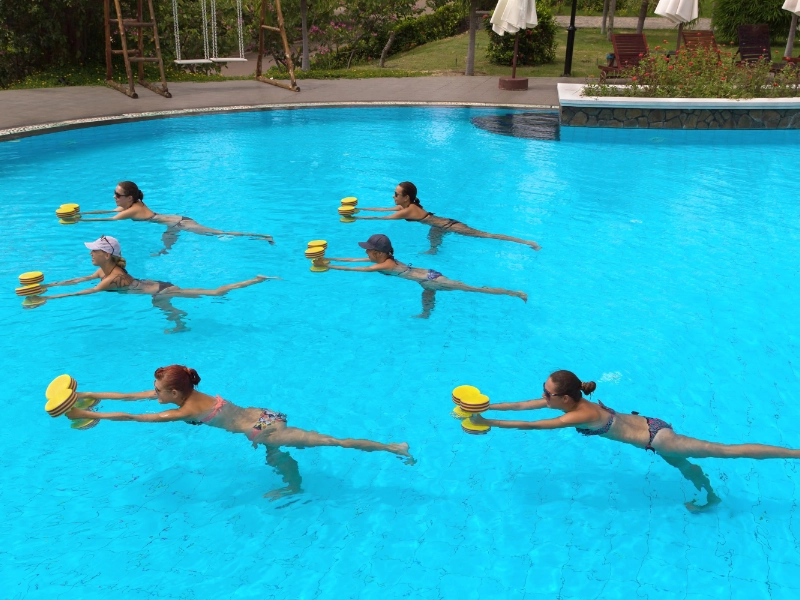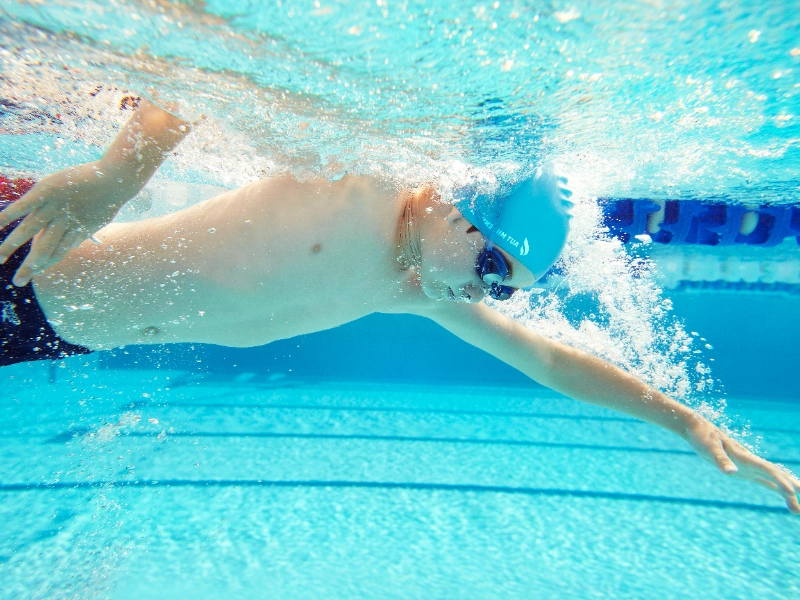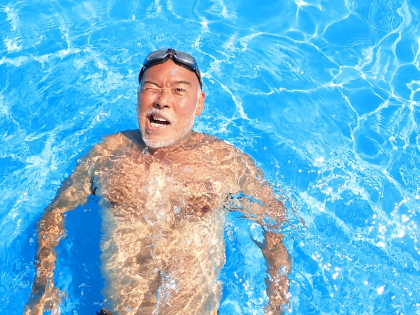Swimming is a convenient and enjoyable workout that has several health advantages. It's especially beneficial for those with joint issues who can't cycle, jog, or walk without experiencing hip or knee pain.
Additionally, it strengthens the muscles in your lower, middle, and upper bodies, as well as your heart, lungs, and core.
Aerobic

Advertisement
Swimming might be beneficial if you want to lose weight, gain muscle, or enhance your cardiovascular health. It's a low-impact exercise, so it won't strain your bones and joints as much.
It provides a full-body workout as well. The majority of your muscles, particularly those in your arms, shoulders, core, legs, and back, are used while you swim. According to the Centres for Disease Control and Prevention, swimming can also boost bone density.
Try swimming for a few short intervals at 70 to 80 percent of your maximal heart rate to obtain a decent aerobic workout. A 200-metre swim twice with a 20-second break is an illustration. You can also use a pull buoy or a kick board while swimming to increase resistance throughout your workout. To guarantee your safety, always abide by the guidelines posted at swimming pools and in roped-off sections of lakes and other bodies of water.
Strength

You can tone your body and increase your strength by swimming. According to Cooper Fitness Centre Dallas Swim Professional Adam Hindson, "It's a full-body workout, and the muscles are strengthened in a different way from other activities that use the same muscle groups." Swimming specifically targets your legs, core, shoulders (deltoids), back (latissimus dorsi and trapezius), and chest (pectoralis major).
Additionally, it contributes to general cardiovascular health improvement, which can lower your risk of heart disease, high blood pressure, and stroke. In fact, according to Swim England, studies have shown that an eight-week programme of consistent swimming can lower markers like systolic blood pressure and body fat percentage.
Swimming is a wonderful alternative for people with chronic diseases that restrict their exercise options, including arthritis or osteoarthritis, because it has little impact and creates a sense of relative weightlessness. It's also a great exercise for people who have breathing difficulties like asthma or obstructive pulmonary disease because it strengthens the lungs and keeps lung capacity stable.
Flexibility

Swimming is not only a great cardiovascular workout, but it can also give you a great full-body strength training workout. Your muscles will work extremely hard whether you are swimming freestyle, backstroke, or even participating in water-based exercise sessions like aqua-jogging.
Swimming can enhance your general physical function and quality of life if you suffer from an illness like arthritis or fibromyalgia that limits mobility. In fact, compared to a control group, participants with osteoarthritis who participated in a three-month swimming programme reported reduced pain and stiffness.
Before beginning any new sort of exercise, including swimming, you should consult your doctor. For certain people, particularly those who have a heart issue or have had a stroke, strenuous exercise might be problematic. If you are unsure of your level of fitness, start with 30 minutes of moderate intensity exercise and then progressively increase the time.
Balance

To overcome the resistance of the water, it takes coordination to move through the water with your arms and legs. Swimming therefore engages your muscles but is not regarded as strength training. According to Buckingham, it's a type of cardiovascular exercise that causes positive changes in the heart.
Depending on your body size and swimming rate, a regular hour of lap swimming can burn hundreds of calories. Additionally, it helps with balance, which is crucial as you age.
To reap the rewards of the workout, which can target the majority of muscle groups without putting undue strain on your joints, you don't have to be a professional swimmer. Most likely, your neighbourhood pool offers enjoyable and useful beginner's instruction for all ages. Swimming offers similar health benefits as other pool fitness activities like water aerobics and aquafit.
Nearly 54 million Americans have osteoporosis and low bone mass, and many are encouraged to swim to strengthen their bones. By strengthening your heart and lungs, swimming may also help you maintain a healthy weight, manage your blood pressure, and lower your chance of developing diabetes.
Advertisement













